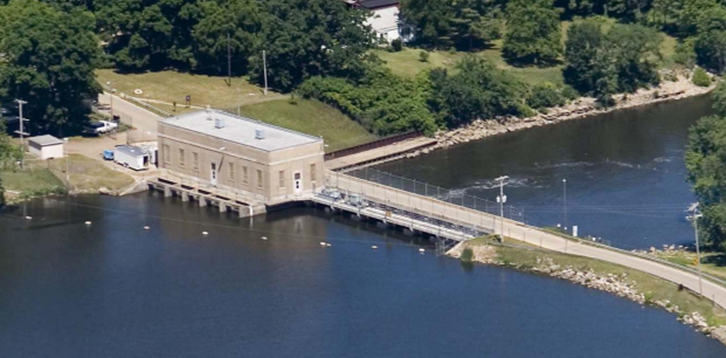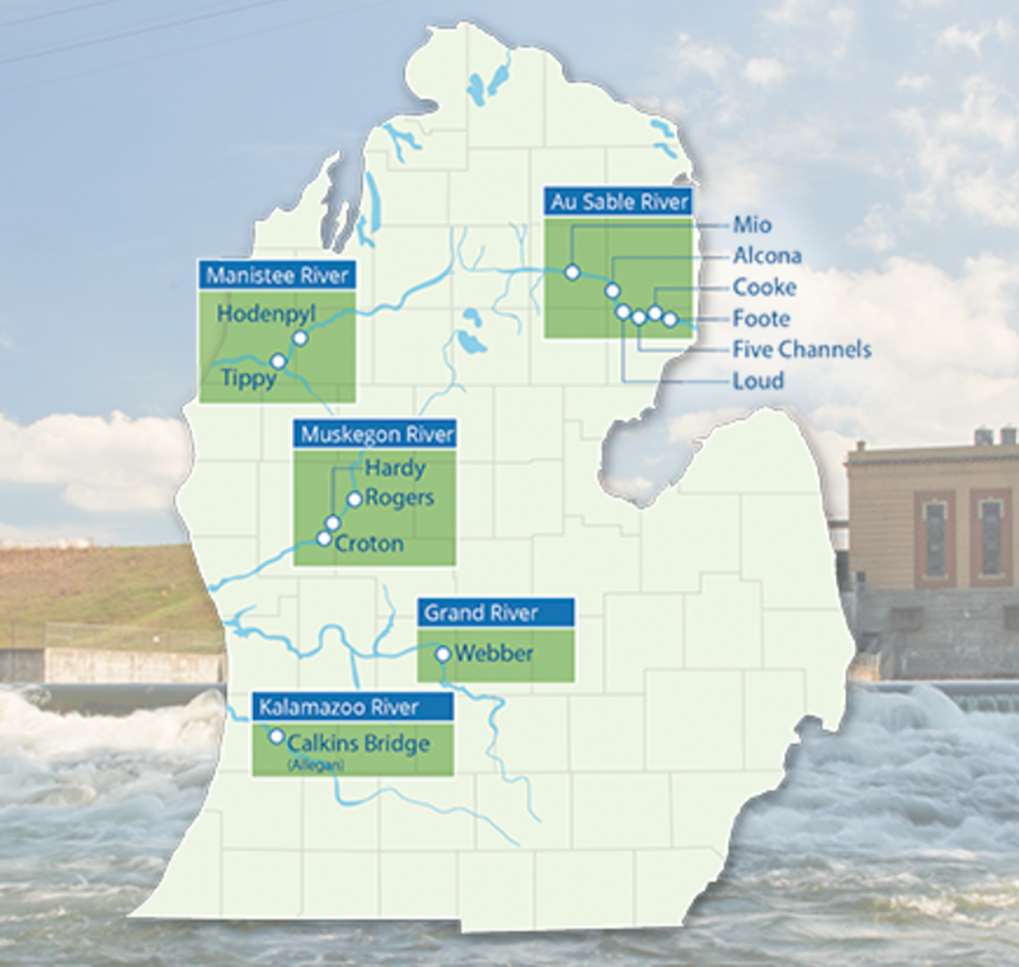

By Gari Voss
On February 2, 2024, Consumers Energy announced that a Request for Proposals (RFP) had been issued to seek potential buyers for the 13 Michigan hydroelectric dams identified for decommissioning.
August 31, 2022, leadership from Consumers Energy made a presentation to stakeholders of the Calkins Bridge Dam. During the conversation, stakeholders were asked to express their feelings about the options related to decommissioning the dam. The community around Lake Allegan stepped forward voicing their disapproval then began a coordinated effort to save the Calkins Bridge Dam.
For Consumers Energy, the operating licenses for the 13 dams in question will start expiring in 2034. Calkins Dam’s licenses will expire in 2040. At this point, the options include: 1. renewing the operating licenses for 30 more years, 2. transferring ownership to another operator, or 3. replacing or removing the existing dam.
CE believes that renewal would require making numerous improvements that would be extremely costly. During the original presentation at Allegan High School, the stakeholders left feeling that CE was not interested in transferring ownership or repairing the dams. It seemed that their major intent was the removal of the dam.
During the 2023 public gathering, members from Public Sector Consultants and Consumers Energy reviewed responses from the 2022 meeting and information on CE’s hydro history, regulations, and the cost of operation for their hydro fleet.
The information reviewed included environmental factors related to river sediment, water quality, invasive species that are downstream of the dam, the sturgeon spawning habits, and the Superfund work. The conversation then moved into community and recreation issues.
Over the last two years, additional meetings have been held between representatives of the Lake Allegan Association and CE. In addition, the Lake Allegan group has done extensive research into the benefits of maintaining the dam.
Calculations show that Calkins Dam, built in 1935, produces only enough power to meet the needs of 1,500 residential customers. For CE, this does not equate to the expense of maintaining the dam.
There is a cost for the removal of a dam to meet state and federal regulations. CE has sited the fact that the dam prevents movement of invasive flora and fauna, sediment control, historic value, transportation, flood control, recreation, etc., while concerns include safety, costs and liabilities, ecological impact, and impeding movement of fish.
There is a process that must be followed when removing a dam and rehabilitating the ecosystem. This can be witnessed upstream of Calkins where the Otsego City and Township dams and the Plainwell Dams have been removed and the riverbanks have been reestablished along with reforestation.
In terms of safety, the Federal Energy Regulatory Commission (FERC) Hazard Classification for Calkins has been determined as low. This means that if the dam fails, there would be no loss of human life and little economic or environmental losses.
The 2023 meeting included imagining the relationship if the dam was retired or removed. The residents and anglers along the Kalamazoo River and Lake Allegan were adamant that without Calkins Dam, there would be no lake which would affect property values and recreation.
Visitors who currently come for recreation would dry up, which would affect business in stores, restaurants, etc. Therefore, the main goal of the Lake Association is to convince CE that dam removal is not an option.
With the issuing of the RFP, it seems that CE is looking beyond decommissioning and removal to other options that would retain a dam at Calkins Bridge. The Lake Allegan group will follow the progress of the RFP.
The initial response from the president of the Lake Allegan Association, Coco Soodek, expressed a low level of confidence in finding a buyer for the Calkins Bridge powerhouse and dam.
“The property is a particularly bad investment for a third party because the buyer would be subject to enormous environmental and regulatory hurdles. According to Consumers Energy, generating power at Calkins is a money loser, since environmental regulations restrict how much our small dam can churn through the turbines. I suspect a buyer seeking to run power would not love dealing with the environmental issues. It’s a Superfund site, about to go through extensive remediation; and FERC requirements are only getting more severe and onerous.”
Soodek continued, “You also can’t redevelop the dam or drain the lake because, once again, it’s a Superfund site. Draining the lake would sweep tons of sediment downstream to Saugatuck, clogging its waterways. Calkins Dam is a critical barrier that prevents invasive sea lamprey, a vicious parasite, from spawning in our watershed and then multiplying uncontrollably in Lake Michigan.”
In Soodek’s conclusion, “Calkins Dam may not be a great investment for a third-party looking to make a buck, but I’ll tell you what it is: a terrific beachhead to create one of the recreational jewels of Allegan County and Southwest Michigan.”
The grassroot efforts of the Lake Allegan Association continue. Soodek shared that during their January 2024 meeting, “The group adopted a new strategic plan to make Lake Allegan permanent, healthy, and modernized. That plan includes broadening the sweep of activities at Lake Allegan, continuing to work with Consumers as our partner and landlord on the lake, and exploring new structures to own and manage the dam and the lake going forward.”
An example of successful grassroots efforts would be the Cornwall Flooding Dam in Cheboygan County that was slated for removal. Total repair would cost $1.6 million. The Great Lakes Fishery Commission pledged to give $350,000 and recently the MI Department of Natural Resources (DNR) dedicated $750,000 to maintain that dam. Save Cornwell Flooding is continuing to seek grants and donations for the final $200,000 to meet their deadline of June 2024.
Can the Lake Allegan Association follow suit and achieve their goal to keep their dam?
